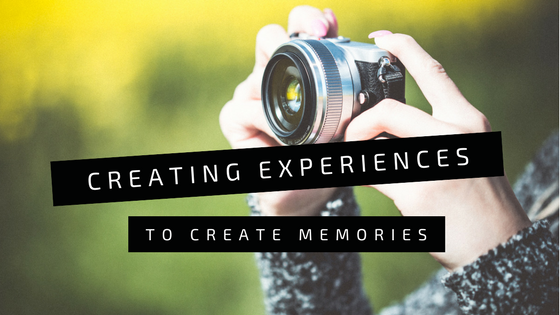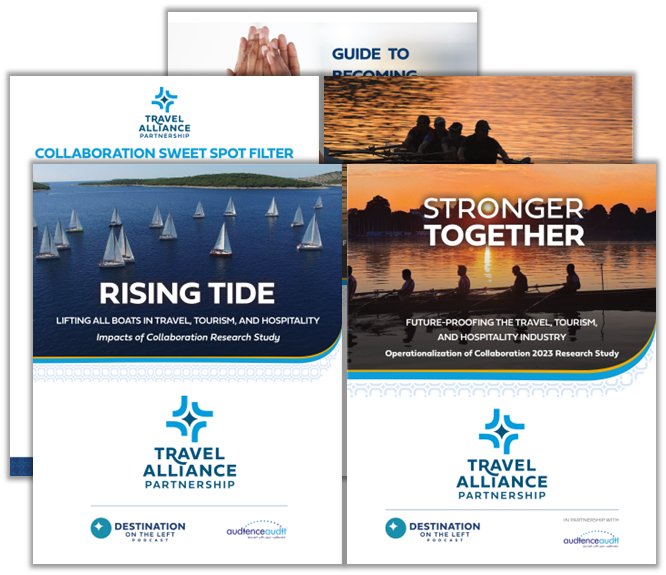Creating Experiences to Create Memories
At the 2017 NYSTIA Empire State Tourism Conference in Lake Placid, I was inspired by the overall theme of how to make a destination stand out that still stand true today. Bill Geist, DMOproz, talked about the importance of disrupting the status quo in order to drive brand awareness and visitors to your destination during his keynote. Within his three steps for making a destination stand out was an underlying theme for all the presentations. Creating experiences for the traveler helps them create memories.

1. Be the Storyteller
We need to make our brands come alive by telling the story. When someone searches a destination, they see many links and results. They don’t see the stories or explanations as to what makes your destination so thrilling. That’s for you to tackle.
As Josiah Brown, the New York Sherpa, explained in his presentation on branding that we need to be inspirational marketers. None of us own our brand. Our brand is the emotional response others have to our product, and lives within the minds of the consumers. Because of this, we need to make sure we’re telling the right story. Most brands say what they do, some explain how, but very few explain why. The consumer experience is the most important piece. They want to know why they should choose your destination over any of the others. Which is why we must not only tell, but show them.
Representatives from The Wild Center and Trampoline Design highlighted millennials’ travel behaviors in a panel presentation. Millennials (anyone born between 1981 and 1996) use their phones for almost everything. Think online banking where they can snap a picture and deposit a check right into their account. They also research travel destinations online, especially through social media, oftentimes asking friends for suggestions on food and activities before looking at a CVB’s website. In fact, 86% of millennials know where they are going to eat before picking what hotel they will stay at. Creating experiences within your content to highlight what people can expect and look forward to is key.
In a wholly different mode of storytelling, Tait Wardlaw and John Bourbonais from Adworkshop dove into how Virtual Reality (VR) is disrupting the tourism industry. Consumers want to get a real look and feel for a destination before ever deciding to travel there. In fact, 360-degree video ads earn 41% more desired actions than 2D traditional video ads. Eventually, they said, VR will be just as important as a website because consumers will want a chance to “try before they buy.” While we are still waiting for the VR and AR (augmented reality) tech trends to really take hold in the tourism space, the advent of Web3 means that the future of tourism marketing is on the horizon.
2. Be the Choreographer
It’s great to have one attraction that draws people in, but if you want them to stay and be engaged, you need to create overall experiences, not just one event. The example that Geist gave was of an owner of a candle-making studio who wasn’t getting much traffic. Eventually he partnered with a wine tasting shop down the street. Together they offered a unique and complete experience of making a candle while enjoying a wine tasting – and business boomed! In this example, creating an experience was fulfilled through collaboration.
Based on the research findings of Schireson Associates, The Wild Center and Trampoline Design understood how far millennials are willing to drive for experiences. Millennials are looking to travel 1-2 hours for a day trip, or 2-3 hours for one night with 2-3 days’ worth of opportunities. Although visitors won’t get to all activities, they want a variety of options to choose from.
A great way to present the variety of experiences is through sample itineraries. Although people are not likely to follow an itinerary from start-to-finish, they enjoy having enough information to choose from. It allows them to curate their own trip.
3. Be the Glue
Engage the attractions and visitors. Make sure you’re chatting “with” the consumers, not “at” them. You can do this by regularly checking social media (through hashtags, geo-tags, etc.) to see what people are saying about your destination. Then join the conversation. If you see a great photo that a visitor took of your destination, reach out and ask if you can use it on your own social media channels. That will both provide you with great content and get them excited that you saw and liked their photo!
Be the reason that people come to visit for one day, then come back for a weekend, and then stay for a whole week.
At the 2016 NYSTIA membership meeting and awards dinner, Elizabeth Anne Shaw, Editor in Chief of Meredith Travel Marketing’s FamilyFun, explained that we have to create experiences that last longer than just the few days a person is at our destination.
- Pre-trip: Most people start getting excited for an upcoming trip a few months in advance and begin discussing it with family, friends, and coworkers.
- During the trip: Most travelers share posts and pictures on social media. (If you didn’t post a picture of yourself on vacation, did you really even go?)
- Post-trip: Once someone returns from vacation, they continue to share their pictures and stories with family, friends, and coworkers.
Josiah Brown wrapped up his presentation by saying that people’s strongest, best childhood memories are from their family vacations. By creating experiences, you’re not only giving visitors something to look forward to; you’re giving them memories to last a lifetime.
So think beyond marketing, advertising and collaborating. Think of how much you’re investing into people’s strongest, best memories.
Author
Related Posts
How Curated Experiences Can Help Your Tourism Marketing
In years past, travelers may have been satisfied to see sites like the Eiffel Tower or Colosseum; now they want to get behind the scenes,...
Marketing for Group Travel: Building Solid Relationships with Tour Operators
Group travel is a significant segment of the tourism market, and if you want to see those buses pulling up to the curb and filling…
